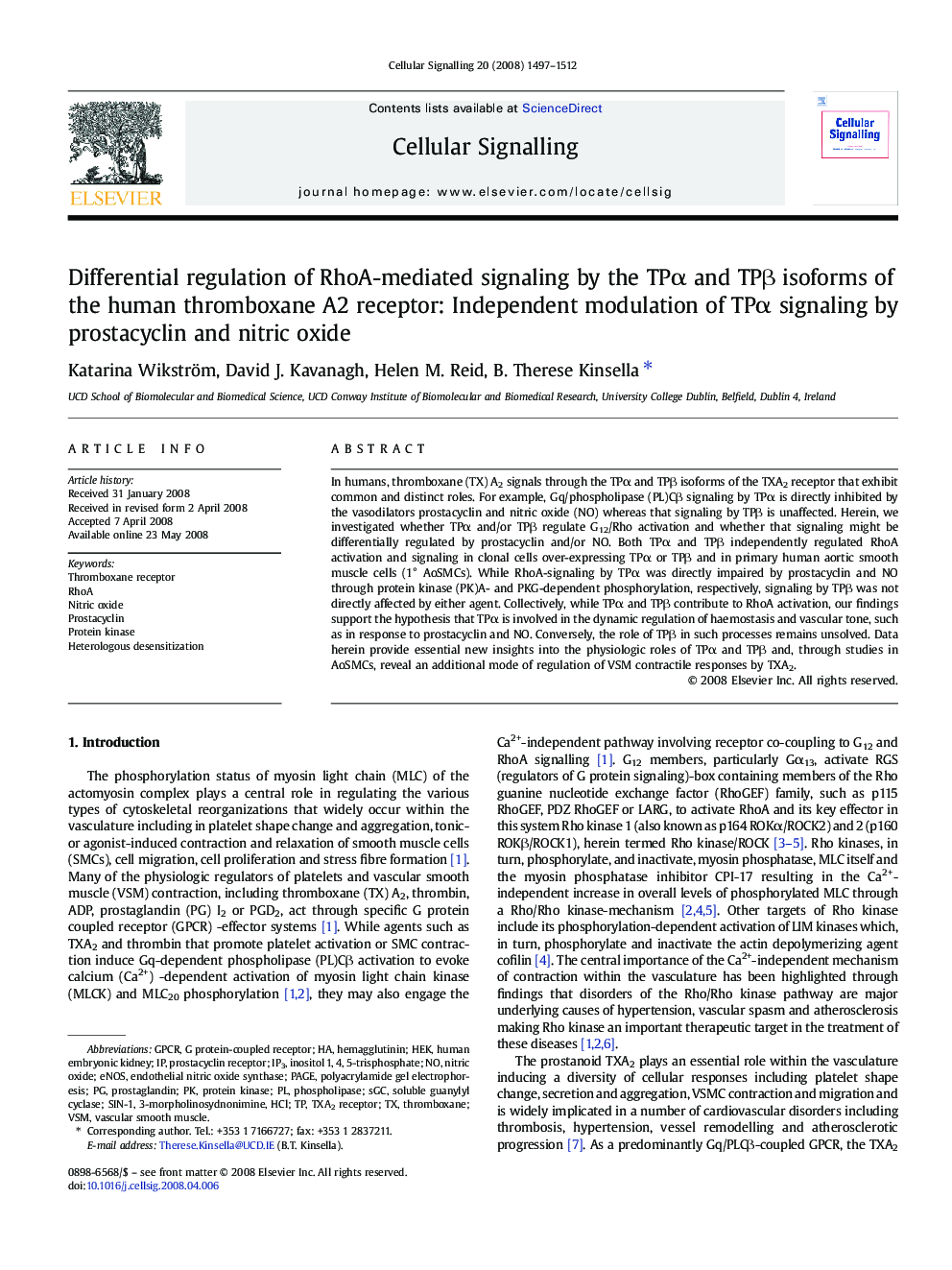| Article ID | Journal | Published Year | Pages | File Type |
|---|---|---|---|---|
| 10817006 | Cellular Signalling | 2008 | 16 Pages |
Abstract
In humans, thromboxane (TX) A2 signals through the TPα and TPβ isoforms of the TXA2 receptor that exhibit common and distinct roles. For example, Gq/phospholipase (PL)Cβ signaling by TPα is directly inhibited by the vasodilators prostacyclin and nitric oxide (NO) whereas that signaling by TPβ is unaffected. Herein, we investigated whether TPα and/or TPβ regulate G12/Rho activation and whether that signaling might be differentially regulated by prostacyclin and/or NO. Both TPα and TPβ independently regulated RhoA activation and signaling in clonal cells over-expressing TPα or TPβ and in primary human aortic smooth muscle cells (1° AoSMCs). While RhoA-signaling by TPα was directly impaired by prostacyclin and NO through protein kinase (PK)A- and PKG-dependent phosphorylation, respectively, signaling by TPβ was not directly affected by either agent. Collectively, while TPα and TPβ contribute to RhoA activation, our findings support the hypothesis that TPα is involved in the dynamic regulation of haemostasis and vascular tone, such as in response to prostacyclin and NO. Conversely, the role of TPβ in such processes remains unsolved. Data herein provide essential new insights into the physiologic roles of TPα and TPβ and, through studies in AoSMCs, reveal an additional mode of regulation of VSM contractile responses by TXA2.
Keywords
HEKTXA2 receptorinositol 1, 4, 5-trisphosphateRhoASIN-1PAGEeNOSIP3GPCRVSMSGCpolyacrylamide gel electrophoresisthromboxaneHeterologous desensitizationSoluble guanylyl cyclaseendothelial nitric oxide synthasePhospholipaseNitric oxidehemagglutininProtein kinaseprostacyclinprostaglandinhuman embryonic kidneythromboxane receptorProstacyclin receptorG protein-coupled receptor
Related Topics
Life Sciences
Biochemistry, Genetics and Molecular Biology
Biochemistry
Authors
Katarina Wikström, David J. Kavanagh, Helen M. Reid, B. Therese Kinsella,
